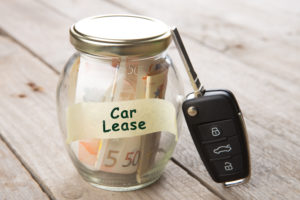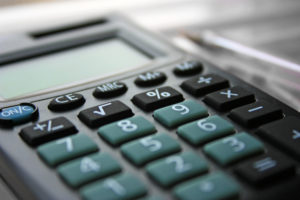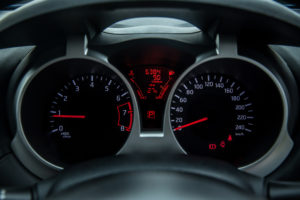
How to afford your first lease car
Choosing to start your first lease is one of the cheapest ways to drive a brand new car. The initial payment is far lower than paying the deposit on a new car purchase. The monthly repayments are also lower, and when the lease term ends you won’t be charged a penny more unless you’ve exceeded your mileage allowance. But, despite being the cheaper option, driving a lease car still comes with a price tag.
What are the costs? Upfront
 The first place to start when considering how to afford your first lease car is to understand all of your up-front and monthly costs. Upfront costs are in the form of an initial payment. This is usually three months of your lease price upfront. The more you can afford to pay up-front, the lower the monthly payments will be. You’ll also need to budget for some administration charges. Admin charges are usually around the £300 mark with some lease brokers charging as much as £900 for administration. While we agree that the steeper end of this seems very high, there is a lot of paperwork involved and a good broker will save you much more than this on the overall cost of your car. Prices are usually quoted without VAT so bear in mind there will be an additional 20% to pay for the deposit amount and admin fees.
The first place to start when considering how to afford your first lease car is to understand all of your up-front and monthly costs. Upfront costs are in the form of an initial payment. This is usually three months of your lease price upfront. The more you can afford to pay up-front, the lower the monthly payments will be. You’ll also need to budget for some administration charges. Admin charges are usually around the £300 mark with some lease brokers charging as much as £900 for administration. While we agree that the steeper end of this seems very high, there is a lot of paperwork involved and a good broker will save you much more than this on the overall cost of your car. Prices are usually quoted without VAT so bear in mind there will be an additional 20% to pay for the deposit amount and admin fees.
What are the costs? Monthly
Then next step is to calculate the monthly costs. This is not just the lease fee plus vat. It’s time to calculate the monthly cost for fuel and servicing/maintaining and insurance too. When working out how to afford your first lease car it’s important to have accurate information on the amount you need to afford. Otherwise, how will you know if the lease is affordable overall? So, your monthly cost will be a combination of
- Monthly lease payment
- VAT
- Fuel
- Servicing
How to do I work out my monthly cost?
 To calculate your monthly mileage consider your regular journeys, perhaps to work and back? Add up the total mileage for the month. Please write it down because there are more sums coming! Next, you must calculate MPG. To do this you will need to follow these steps:
To calculate your monthly mileage consider your regular journeys, perhaps to work and back? Add up the total mileage for the month. Please write it down because there are more sums coming! Next, you must calculate MPG. To do this you will need to follow these steps:
- Fill up your car’s fuel tank until the fuel pump cuts off.
- Reset the trip meter reading on the dashboard, so you can record how many miles you do until the next fill up.
- Drive normally until you next need to fill up.
- Fill up the tank up completely again and make a note of how many litres of fuel you put in.
- After fuelling, make a note of the reading on the trip meter before resetting it again.
Now you should have two numbers – the number of miles since you last filled up, and the number of litres you have just put in your car’s fuel tank. Use this formula to calculate mpg: No. of miles / No. of litres = mpg. Then take your monthly mileage calculation and divide it by your MPG calculation to give you the number of gallons of fuel you will need per month. Times this by the cost per gallon of fuel and you have a fairly accurate fuel budget to add to your monthly calculations.
The only additional cost to consider is servicing and maintenance. If you already know that your car service will cost XXX and it’s only a few months away then the overall cost of the service plus VAT should be broken down into monthly instalments which you can put aside ready to cover the cost of the service.
What are my options for funding my lease?
The majority of people opt to pay their monthly lease fees by direct debit. However, there are other accepted methods. Some people make occasional payments on their credit card. This is ok for an emergency or if you plan to pay the balance off of your card each month. However, if you plan to use the credit card as a long terms means of financing the lease beware that you will be paying APR on top of APR if you don’t clear the balance! This means you’ll be paying interest twice on the same payment.
Is there anything to pay at the end of the lease that I need to account for?
 The answer is that there might be. Some people can hand the car back at the end of their lease contract and not pay a penny more. Others are faced with a bill they perhaps weren’t expecting. It’s always best to be prepared for any end of contract fees. The ones to worry about are excess mileage charges. Your mileage allowance will be documented in your lease contract so it’s worthwhile keeping an eye on this throughout the course of your lease. If you think you might go over your mileage allowance then this blog has all the answers on what to do.
The answer is that there might be. Some people can hand the car back at the end of their lease contract and not pay a penny more. Others are faced with a bill they perhaps weren’t expecting. It’s always best to be prepared for any end of contract fees. The ones to worry about are excess mileage charges. Your mileage allowance will be documented in your lease contract so it’s worthwhile keeping an eye on this throughout the course of your lease. If you think you might go over your mileage allowance then this blog has all the answers on what to do.
Excess mileage is usually charged per mile and the amount varies between models of vehicle. So if for example if your mileage allowance was 10,000 miles for the course of a 2-year contract but you ended up doing 20,000 miles there would be 10,000 miles of excess mileage due to be paid. Let’s say the excess mileage was 6p per mile the total charge at the end of your lease for excess mileage would be £600+vat.
Consider wear and tear charges
You should also be mindful of wear and tear or damage to the car. A certain amount of wear and tear is covered within your lease cost but should you hand the car back with more than the contracted amount of wear and tear then there will be a fee to pay.
Which Car suggests that you should ensure the following before handing your lease car back.
- The car should be returned in a safe and roadworthy condition, with all the appropriate documentation, spare keys and equipment.
- Cars should be serviced according to the manufacturer’s service schedule. Books should be stamped at the time of service to keep the history of the car.
- Before the car is returned, the car should be in a clean condition to allow a thorough inspection of the car.
They also list a brief guide to wear and tear in this article containing some handy considerations between what the manufacturer typically considers to be normal wear and tear vs excessive wear and tear. By choosing a leasing company registered with the BVLRA you can be confident that they will trade fairly and not try to charge for excessive wear and tear unfairly. The cost of excessive wear and tear will vary between makes and models of car. It will be documented in your lease paperwork. To avoid any nasty surprises you should also familiarise yourself with this. Then, you can be prepared for any additional charge you might be faced with.
